第22章 MONEY OR SIMPLE CIRCULATION(3)
The difference between exchange-value and price is,on the one hand,merely nominal;as Adam Smith says,labour is the real price of commodities and money their nominal price.Instead of saying that one quarter of wheat is worth thirty days'labour,one now says it is worth one ounce of gold,when one ounce of gold is produced in thirty working days.The difference is on the other hand so far from being simply a nominal difference that all the storms which threaten the commodity in the actual process of circulation centre upon it.A quarter of wheat contains thirty days'labour,and it therefore does not have to be expressed in terms of labour-time.But gold is a commodity distinct *from wheat,and only circulation can show whether the quarter of wheat is actually turned into an ounce of gold as has been anticipated in its price.This depends on whether or not the wheat proves to be a use-value,whether or not the quantity of labour-time contained in it proves to be the quantity of labour-time necessarily required by society for the production of a quarter of wheat.The commodity as such is an exchange-value,the commodity has a price.This difference between exchange-value and price is a reflection of the fact that the particular individual labour contained in the commodity can only through alienation be represented as its opposite,impersonal,abstract,general --and only in this form social --labour,i.e.,money.Whether it can be thus represented or not seems a matter of chance.Although,therefore,the price gives exchange-value a form of existence which is only nominally distinct from the commodity,and the two aspects of the labour contained in the commodity appear as yet only as different modes of expression;while,on the other hand,gold,the embodiment of universal labour-time,accordingly confronts concrete commodities merely as an imaginary measure of value;yet the existence of price as an expression of exchange-value,or of gold as a measure of value,entails the necessity for alienation of commodities in exchange for glittering gold and thus the possibility of their non-alienation.In short,there is here contained in latent form the whole contradiction which arises because the product is a commodity,or because the particular labour of an isolated individual can become socially effective only if it is expressed as its direct opposite,i.e.,"abstract universal labour.
The utopians who wish to retain commodities but not money,production based on private exchange without the essential conditions for this type of production,are therefore quite consistent when they seek to "abolish"money not only in its palpable state but even in the nebulous,chimerical state that it assumes as the measure of value.For beneath the invisible measure of value lurks hard money.
Given the process by which gold has been turned into the measure of value and exchange-value into price,all commodities when expressed in their prices are merely imagined quantities of gold of various magnitudes.
Since they are thus various quantities of the same thing,namely gold,they are similar,comparable and commensurable,and thus arises the technical necessity of relating them to a definite quantity of gold as a unit of measure .This unit of measure then develops into a scale of measure by being divided into aliquot parts which are in turn subdivided into aliquot parts.[2]The quantities of gold themselves,however,are measured by weight.
The standard weights generally used for metals accordingly provide ready-made standard measures,which originally also served as standard measures of price wherever metallic currency was in use.Since commodities are no longer compared as exchange-values which are measured in terms of labour-time,but as magnitudes of the same denomination measured in terms of gold,gold,the measure of value ,becomes the standard of price .The comparison of commodity-prices in terms of different quantities of gold thus becomes crystallised in figures denoting imaginary quantities of gold and representing gold as a standard measure divided into aliquot parts.